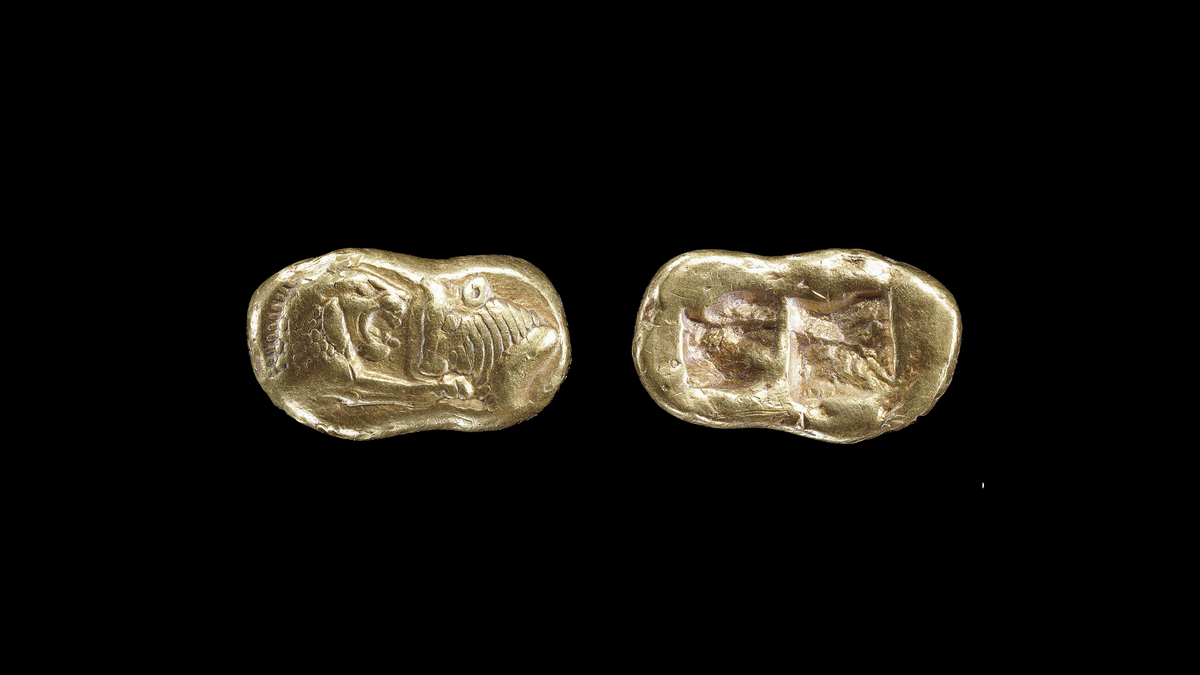Name: Croesus stater or Croeseid
What it is: A gold coin
Where it is from: The kingdom of Lydia (modern western Turkey)
When it was made: Circa 560 to 547 B.C.
Related: Ancient Egyptian ‘granary with scribes’ diorama: A miniature workplace found buried in a tomb from the Middle Kingdom
What it tells us about the past:
In the middle of the sixth century B.C., King Croesus of Lydia minted the world’s first gold coin. Known as a stater or Croeseid, the coin represents a key turning point in the history of financial systems: the invention of the gold standard.
Croesus ruled over the kingdom of Lydia, the western half of what is now Turkey, from 560 to 546 B.C. Already a wealthy man thanks to his control over the precious metal deposits in the Pactolus River (now known as the Sart Çayı), Croesus expanded his power by establishing diplomatic ties and trade relationships with Egypt, Greece and Babylon. This trade was facilitated through the invention of coins — small, circular bits of precious metal — which were first issued by Croesus’ father, Alyattes, around 650 B.C.
But Alyattes had been making coins out of electrum, a naturally occurring gold-and-silver alloy that often has bits of other metals in it. Alyattes’ coins were standardized based on weight, but because the ratio of gold to silver in electrum varies, the value of the coins was unpredictable.
MORE ASTONISHING ARTIFACTS
Croesus decided to change the variable electrum coins into two separate denominations to eliminate the guesswork on valuation. He set up workshops in Sardis, the capital of Lydia, to refine gold and silver from electrum. These first coins were about the size of a dime and were standardized at 10.7 grams (about one-third of an ounce). There was a consistent exchange rate between gold and silver, making Croesus’ system the world’s first two-metal monetary system and the earliest gold standard.
The gold and silver Croeseids had the same design. On one side were the front parts of a lion and a bull. The symbolism may reflect a common Near Eastern motif, or each animal may represent one of the precious metals. On the back of the coin, two squares were hammered into the gold staters and one into the silver ones. Soon after Croesus invented modern coinage, the idea was adopted throughout the ancient world.
Although Croesus lost the kingdom of Lydia to Persia during the Siege of Sardis in 546 B.C., his name and reputation as a wealthy man live on in the phrase “as rich as Croesus.”


